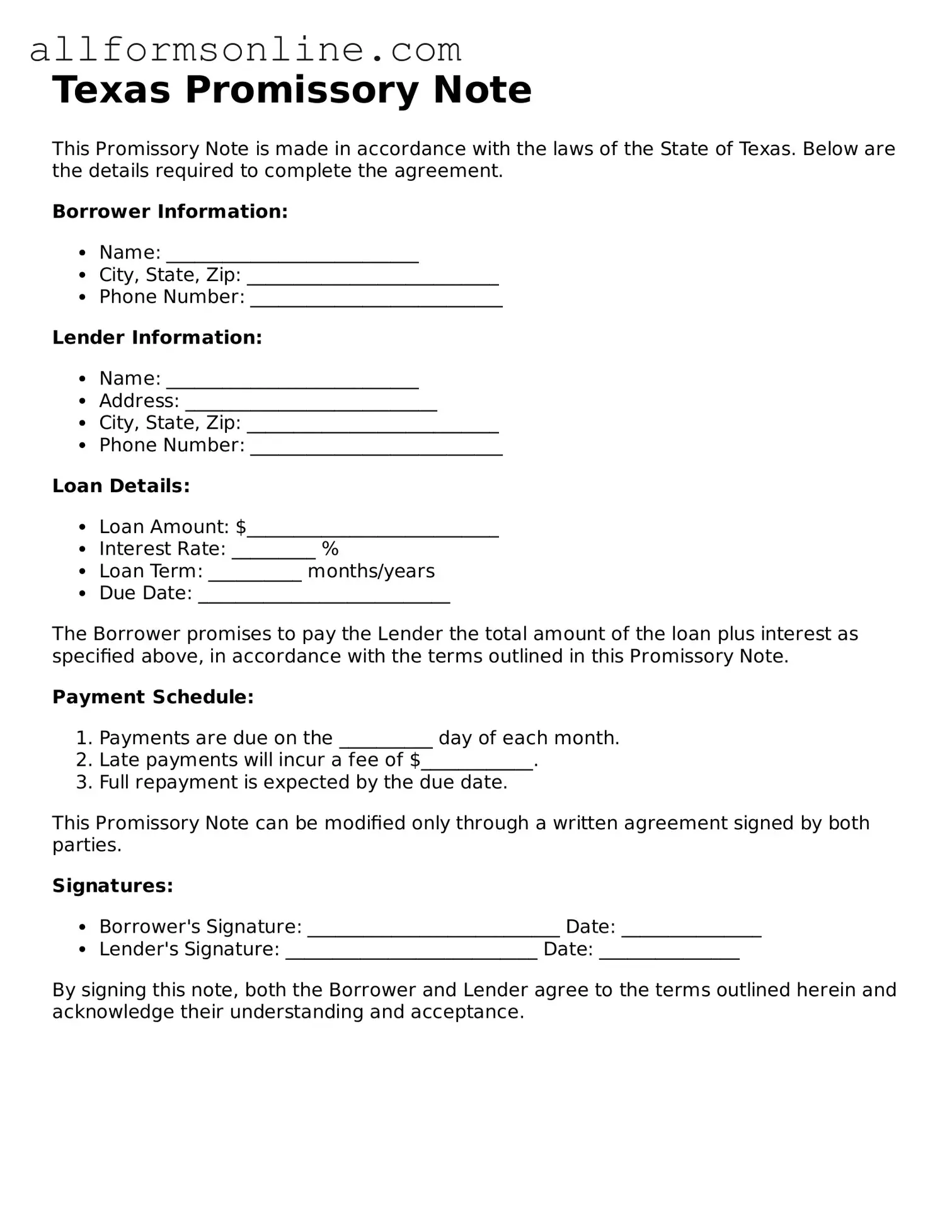What is a Texas Promissory Note?
A Texas Promissory Note is a written agreement in which one party promises to pay a specified sum of money to another party at a designated time or on demand. This document outlines the terms of the loan, including the principal amount, interest rate, payment schedule, and any applicable fees. It serves as a legal record of the debt and can be enforced in a court of law if necessary.
Who typically uses a Texas Promissory Note?
Individuals and businesses commonly use Texas Promissory Notes in various situations. Lenders may use them when providing personal loans, business loans, or real estate financing. Borrowers, on the other hand, may need them when seeking funds for personal expenses, home purchases, or business ventures. This document is beneficial for both parties as it clarifies the terms of the loan and protects their interests.
What are the key components of a Texas Promissory Note?
A Texas Promissory Note typically includes several important components. These components include the names and addresses of the borrower and lender, the principal amount borrowed, the interest rate, the payment schedule, and the maturity date. It may also specify any late fees or prepayment penalties. Including clear and concise terms helps prevent misunderstandings between the parties involved.
Is a Texas Promissory Note legally binding?
Yes, a Texas Promissory Note is legally binding once it is signed by both the borrower and the lender. This means that both parties are obligated to adhere to the terms outlined in the document. If the borrower fails to make payments as agreed, the lender has the right to take legal action to recover the owed amount. It is crucial for both parties to fully understand the terms before signing.
Do I need a lawyer to create a Texas Promissory Note?
While it is not legally required to have a lawyer draft a Texas Promissory Note, consulting with one can be beneficial. A lawyer can help ensure that the document complies with Texas laws and adequately protects your interests. However, many individuals choose to use standardized templates or forms available online, which can be effective if completed accurately and thoroughly.
